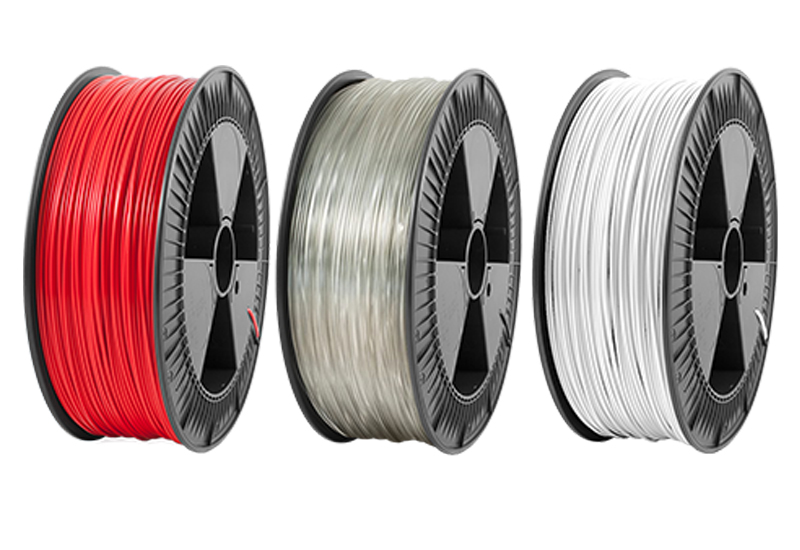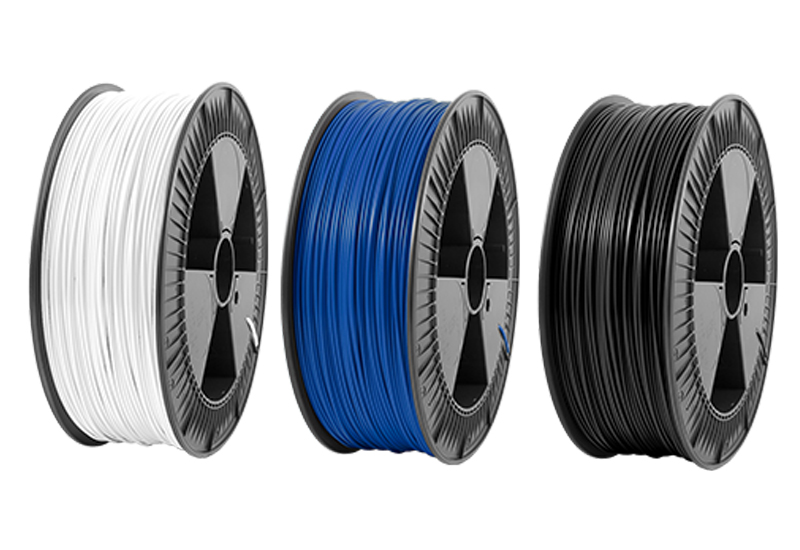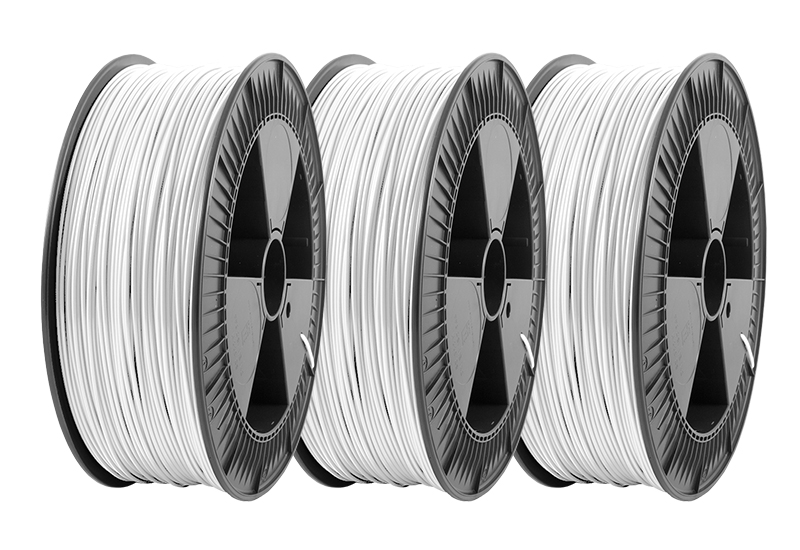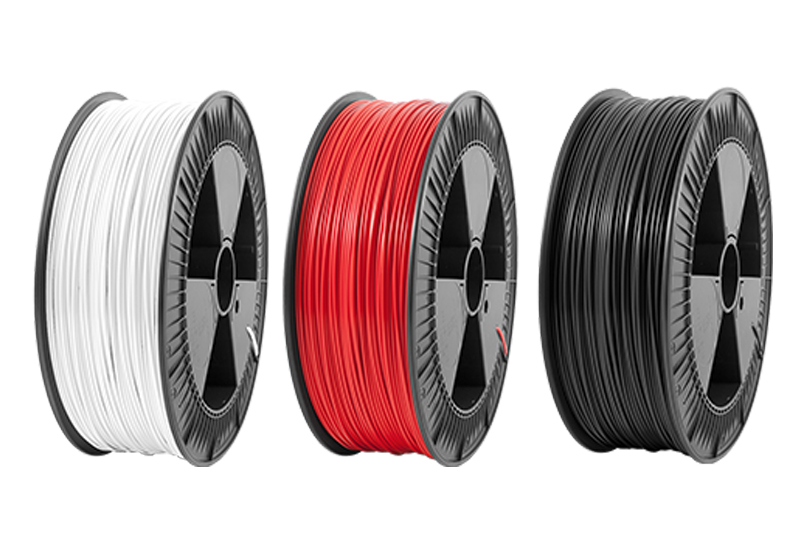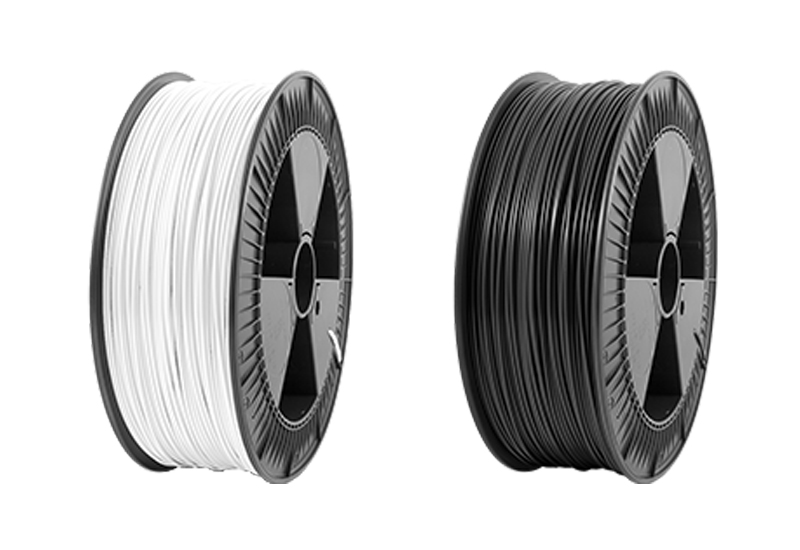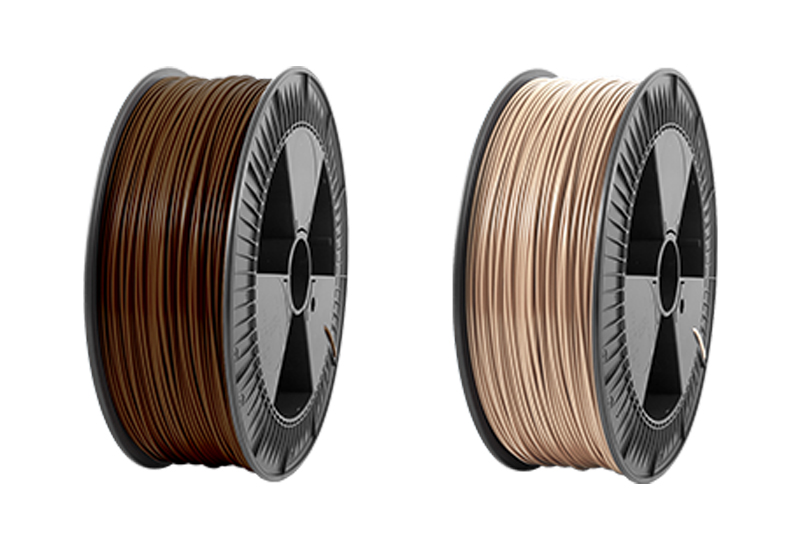3D Platform 3D Materials
3D Platform 3D printers utilize an open market platform, which is capable of printing most materials created for Fused Filament Fabrication (FFF).
Materials must meet the following criteria:
– The material type/shape matches the extruder (e.g. filament or pellets).
– The diameter of the material matches the diameter of the extruder (typically 1.75, 2.85 or 6.0 mm).
– The melting point (“print temp”) has a melting point that is equal to or less than that of the extruder (typically 290°C).
– The maximum bed temp (typically 145°C) is within the limits of the material.
– The air temp (sometimes called “chamber” or “oven” temp) of the machine is within the limits of the material.
This includes, but not limited to PLA (Polylactic Acid), ABS (Acrylonitrile Butadiene Styrene), Nylon, Ninja Flex, HIPS (High Impact Polystyrene), TPU, Wood or Metal filled materials, Nylons, some Polycarbonate materials. Note: Some materials may require increased bed and nozzle temperatures, as well as additional ventilation. To ensure print quality and an extend printer nozzle life cycle, we strongly recommend using consistent, good quality filament.
Learn MoreMore About 3D Platform 3D Materials
3D Platform 3D printers utilize an open market platform, which is capable of printing most materials created for Fused Filament Fabrication (FFF).
Materials must meet the following criteria:
– The material type/shape matches the extruder (e.g. filament or pellets).
– The diameter of the material matches the diameter of the extruder (typically 1.75, 2.85 or 6.0 mm).
– The melting point (“print temp”) has a melting point that is equal to or less than that of the extruder (typically 290°C).
– The maximum bed temp (typically 145°C) is within the limits of the material.
– The air temp (sometimes called “chamber” or “oven” temp) of the machine is within the limits of the material.
This includes, but not limited to PLA (Polylactic Acid), ABS (Acrylonitrile Butadiene Styrene), Nylon, Ninja Flex, HIPS (High Impact Polystyrene), TPU, Wood or Metal filled materials, Nylons, some Polycarbonate materials. Note: Some materials may require increased bed and nozzle temperatures, as well as additional ventilation. To ensure print quality and an extend printer nozzle life cycle, we strongly recommend using consistent, good quality filament.






